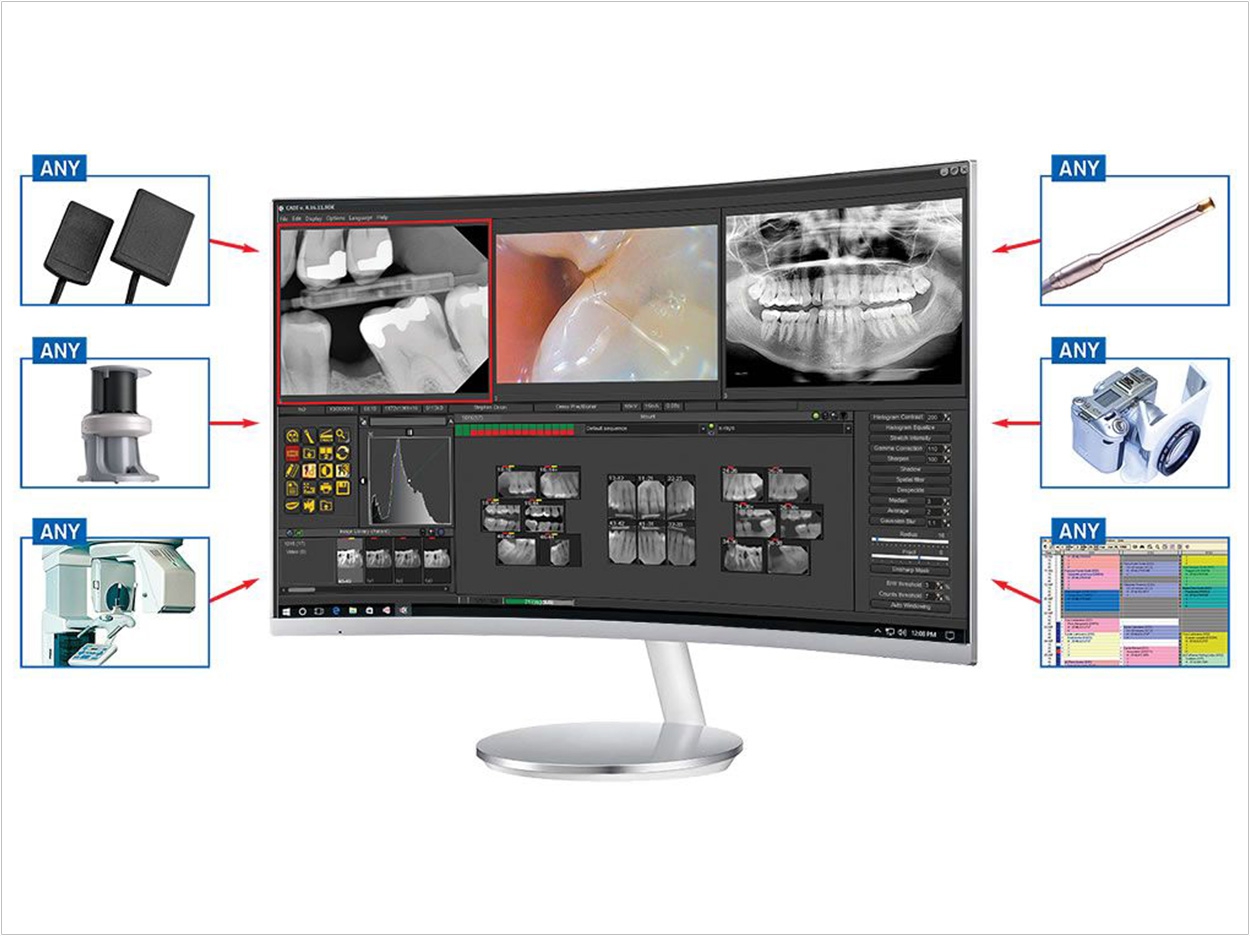
Polaroid HealthCare’s Windows-based Polaroid DDS imaging program has no limits and no fees, according to the company. Its open architecture design offers direct integration instead of twains with most of today’s top IO X-ray sensors, PSP scanners, intraoral cameras, caries detectors, digital SLR cameras, and 2D panoramic and cephalometric systems, Polaroid said.
Polaroid DDS means users have just one software program to learn and use for all of their current and future imaging needs, according to the company. It was created as a free-standing, open-source software package, not just a product for one particular piece of hardware, Polaroid said.
Also, the software combines dental and medical imaging algorithms to produce images that often are better than some hardware brands’ own software, Polaroid said. Users can choose from its specialized filters to display six variations of an image side by side, with different detail, sharpness, or contrast for general, perio, or endo procedures.
Users can continue to use their existing hardware devices in Polaroid DDS, the company said. When it’s time to replace them, users then can choose a product from any brand instead of being locked into high-priced proprietary hardware and support fees, Polaroid said.
Instead of the limited bridges that many popular practice management programs use, Polaroid continued, Polaroid DDS offers direct integration with two-way communication when available. It also has easy data converters for many of today’s top imaging programs to accurately convert existing patient images into Polaroid DDS, the company said, saving hours.
Polaroid DDS has no monthly or yearly fees and comes with free lifetime installation, training, and support. It is available in more than 25 languages. For more information, call (844) 789-5050 or email info@polaroidhealth.com.
Related Articles
Device Detects Caries Three Different Ways
iTero Workflow Software Gets Updated
Collaboration to Simplify the Guided-Surgery Workflow









